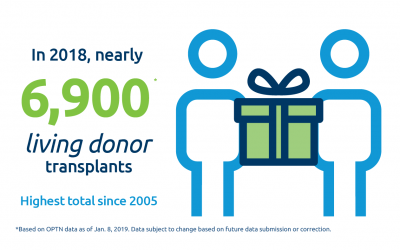In focus
2018 living donor transplants increase 11 percent
In 2018, UNOS reported that the number of living donor transplants was nearly 6,900, the highest since 2005.
Similar survival rates for PAK and SPK transplants
A new study by UNOS researchers in the American Journal of Transplantation shows that sequential pancreas transplant after a kidney transplant (PAK) and simultaneous pancreas-kidney (SPK) transplants result in similar patient survival rates.


